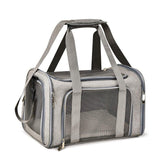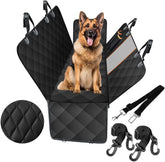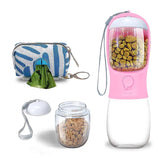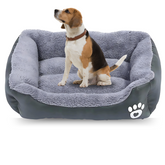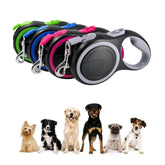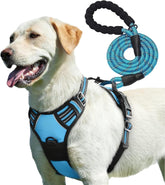We have all been in that position, where we walk into our family room only to find our dog has destroyed the couch, chewed up our coffee table, or even damaged our dining chairs. You are full of frustration, and with a question like “how to stop dog chewing furniture,” right?. It is a common problem among dog parents (and it can be exhausting). But there is a solution!
However, This solution might not work overnight, but you will be able to see the changes. To stop your dog from chewing the furniture, certain tips can be performed. In this blog, you will explore how you can stop them.
Why Do Dogs Chew on Furniture?
The most important thing to understand is that chewing is absolutely natural for dogs. But when your dog begins chewing on your costly furniture, it becomes an actual issue. At that moment you just wish for a dog-proof furniture. Here are the primary reasons why dogs chew, and knowing the underlying reason is the key to fixing the issue:
1. Teething in Puppies
If you have just become a pet parent, then know that you will most likely see them chew the furniture, shoes, and everything that's in their reach. Like human babies, they are teething and will need something to chew with those sensitive gums. If well-designed chew toys aren't provided, your furniture is the second best thing they will chew!
2. Boredom & Lack of Stimulation
As anyone who owns a high-energy dog will tell you, dogs need to exercise and be stimulated mentally. If they don’t have enough time to play or work on something of their own, then they will do it themselves, likely chewing your furniture.
If your dog has been alone for a long time, or if he just did not have enough exercise, then it's most likely bored chewing.
3. Hunger or Nutritional Deficiencies
The dog chews home items because a nutrient is lacking in the diet. When a dog lacks a particular vitamin or mineral, such as iron, zinc, or fiberit will opt for chewing wood, leather, or fabric products as a source of the missing substance. The remedy is just to give your dog a well-balanced diet.
4. Separation Anxiety & Stress
If your dog chews furniture solely when you are not present, it is a situation of separation anxiety. Dogs that realize their owner is away may chew to console themselves. In this case, you might also focus on reducing your dog’s anxiety with gentle and comforting practices.
5. Attention-Seeking Behavior
Some dogs chew in order to gain the attention of their owner. If you usually shout at your dog when you catch them chewing on furniture or even run them off the furniture, your dog might have learned that chewing is a means of getting you to attend to them, even in a negative way. This can occur over time and can actually encourage the behavior.
How to Stop Your Dog from Chewing Furniture?
Now that we know why dogs chew, let's examine some useful UK dog training tips to curb it. The trick is to divert their chewing behavior and render your furniture unattractive.
1. Provide the Right Chew Toys
A good starting point is ensuring your dog has appropriate toys to chew. Choose tough, safe chew toys suitable for your dog's chewing power. Rotate the toys regularly so they remain stimulating. Some of the best chew toys for dogs UK are:
- Rubber chew toys
- Rope toys
- Frozen teething toys (especially for puppies)
When your dog has something specifically designed to chew on, they're less likely to chew up your couch.
2. Provide Natural Chews
If you would like to know how to how to prevent dogs from chewing wood, try providing your dog with long-lasting natural chews. These are wonderful because they satisfy their desire to chew as well as support healthy teeth. Some of them include:
- Antlers (they last long)
- Yak chews
- Rawhide-free dental chews
These tend to be more enticing to dogs and can occupy them for hours.
3. Train Your Dog to "Leave It"
Training your dog to recognize commands such as "leave it" is useful in inhibiting their destructive chewing. Here's an easy method of training:
Take a chew toy in your hand.
If your dog is attempting to chew on furniture, give them the command "Leave it."
When your dog desists and looks at the toy, give them a treat.
Positive reinforcement is effective, and with this technique, your dog can learn what they can chew on and what not.
4. Use Bitter Sprays & Deterrents
If your dog can't seem to desist from chewing on furniture, you may consider using a bitter spray. Such sprays are safe to use and stop dog from destroying furniture. Just apply the spray to the furniture and watch your dog learn quickly that the couch isn’t for chewing.
5. Try a Homemade Lemon Juice or Vinegar Spray
Dogs don't like citrus or vinegar, so you can make your own spray. Combine equal parts lemon juice or apple cider vinegar with water, and lightly mist your furniture (but always test it on a small area first to make sure it won't hurt the fabric). This easy trick can make your furniture look less desirable.
6. Keep Them Busy with Exercise & Mental Stimulation
The more active your dog, the more it will chew when bored. Constant walks, exercise, and mind stimulation (such as puzzle toys or treat-dispensing feeding devices) need to be included in order to keep your dog busy.
A tired dog is a happy dog — and an unhappy dog is chewing wood.
7. Supervise or Use Crate Training
If you cannot stay at home to keep an eye on your dog, then crate training your dog would be advantageous. A crate is a safe space for your dog to be in when you are out of the house, possibly preventing problems when you leave your dog alone. After you assist your dog in associating the crate with good things, your dog shall be calm and secure staying in the crate.
Could Chewing Mean My Dog Has Anxiety?
If chewing done by your dog seems greater in your absence, it might be separation anxiety. Separation anxious dogs chew pieces of furniture, bark compulsively, or adopt destructive patterns as they are concerned about being abandoned. For the dog owners in UK, dealing with dog anxiety with solutions is a need.
They offer soothing solutions such as anxiety vests, pheromone sprays, or play therapy that can be effective in reducing stress. You might also try to desensitize your dog around your departure so they are not as stressed whenever you leave them.
Mistakes to Avoid When Stopping Chewing Behavior
1. Don’t Punish Your Dog
Punishing your dog for chewing is not effective. Yelling or scolding actually makes the issue worse by heightening your dog's anxiety. Use positive reinforcement instead — redirecting the chewing activity to an appropriate outlet.
2. Don’t Use Household Items as Chew Toys
Some people think giving old shoes or socks to chew on will stop their dog from chewing the furniture. This just confuses your dog, though. They won’t be able to distinguish between old and new items, and they may start chewing on anything they find.
3. Do Not Encourage Chewing for Attention
Do not pay attention to your dog while they are chewing. It indirectly makes them believe that you would react if they perform this certain action. Ignore the behavior and redirect your dog to a chew toy.
Conclusion
To deal with a new dog while they are young demands a lot of patience. To make sure your dog doesn't adopt a habit of chewing furniture and other things in the house, use the above ways and see the results. Choose correct, durable toys and give them proper training that improves their behavior.
However, the change wouldn't happen overnight but you can still make your dog stop chewing at one point of time. With some determination, your dog will learn what they can chew on, and your furniture will be protected!
